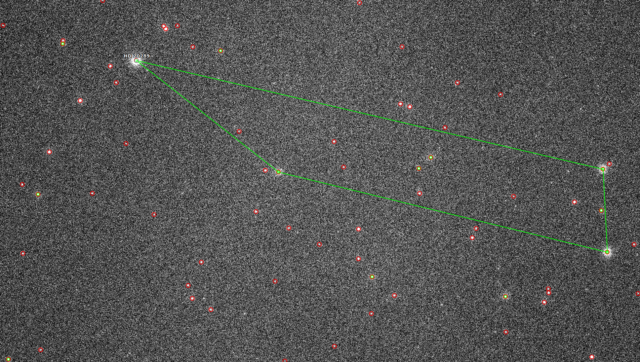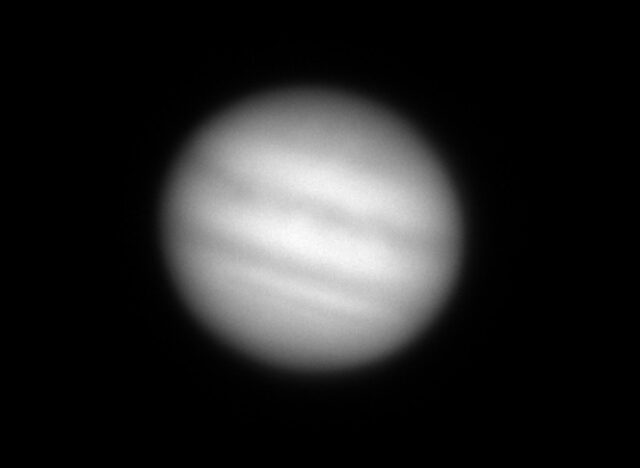
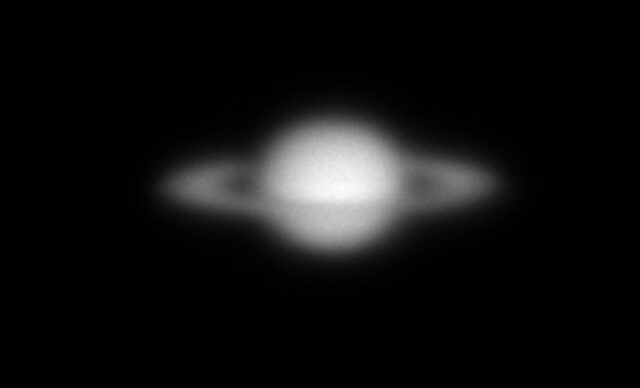
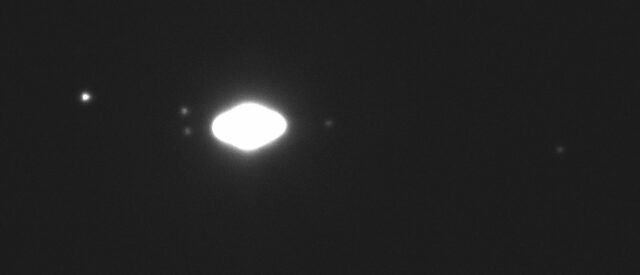
I did some comparisons on astronomy.tools and found that my guide camera should be slightly higher resolution than my main DSLR. Specifically, my Nikon D5300 has way more pixels with 6000x4000 (as compared to the guide camera at 1936x1096). But, the individual pixels are smaller in the guide camera, which means the guide camera has a smaller angle per pixel measurement, making it able to see more detail than the Nikon - at the cost of a much smaller total field of view.
Anyway, I wanted to take a picture of Saturn. I also got Jupiter and some Pleiades stars. Some of the pictures intentionally over expose the main subject to show the background stars and fainter moons. You can see 5 of Saturn's moons, and 3 of Jupiter's.
Stellarium screenshot showing which 5 of Saturn's moons are visible in the long exposure of Saturn:
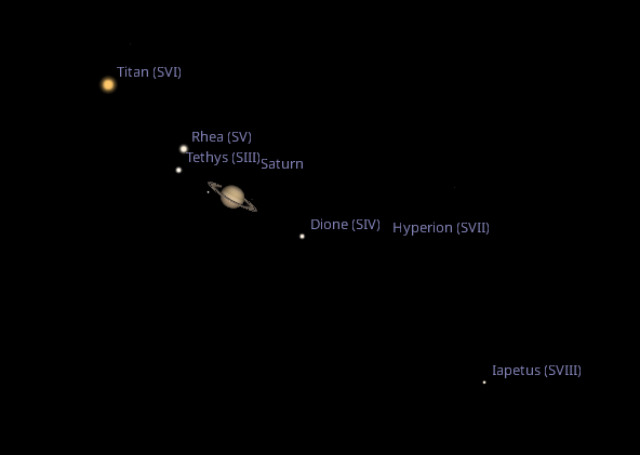
When I was about done, I noticed in stellarium that Uranus was about halfway between Jupiter and the Pleiades, so I decided to try to take a picture of Uranus. I attempted to be a human star tracker, but there just wasn't anything bright enough for naked eye visibility nearby. I couldn't find the stars I was seeing in the picture in stellarium. But, since this camera requires a computer and I was doing this from home, I uploaded a picture to astrometry.net which was able to tell me where I was pointed and identify a star in the image. I was able to search stellarium for that star, and from there I found the same stars I was seeing in the image, and I was able to move the mount towards Uranus. When it was in the view, I was able to get a picture of Uranus. I was imaging through the guide scope at this point and was able to plug in an eyepiece to the main telescope and I could actually see Uranus too. For this picture of Uranus, it just looks like a star, and you need to compare with a star map to tell that you're actually seeing Uranus.
Uranus and background stars:
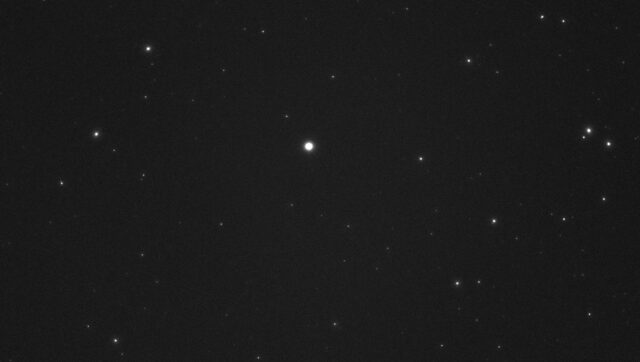
Stellarium screenshot showing Uranus and the same stars (with a small rotation):
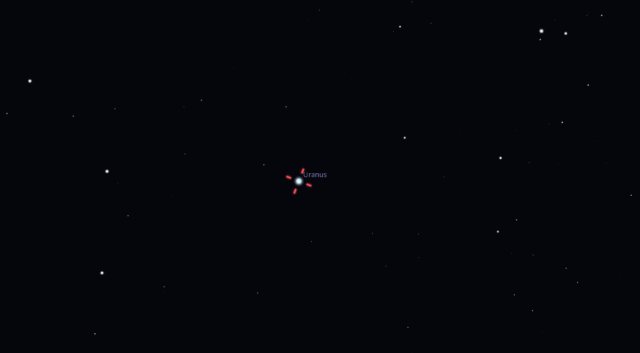
I have since installed the open source offline astrometry.net tools to my laptop, so I can replicate this process without internet in the future. I also made some tools for making it easier to use the offline astrometry.net suite for my needs. The source for my tools can be found on my gitlab project.
Image of stars roughly in the direction of Uranus - processed by astrometry.net offline tools - showing the
stars found in the image, the stars used for the solution, and the only Henry Draper star of the view:
